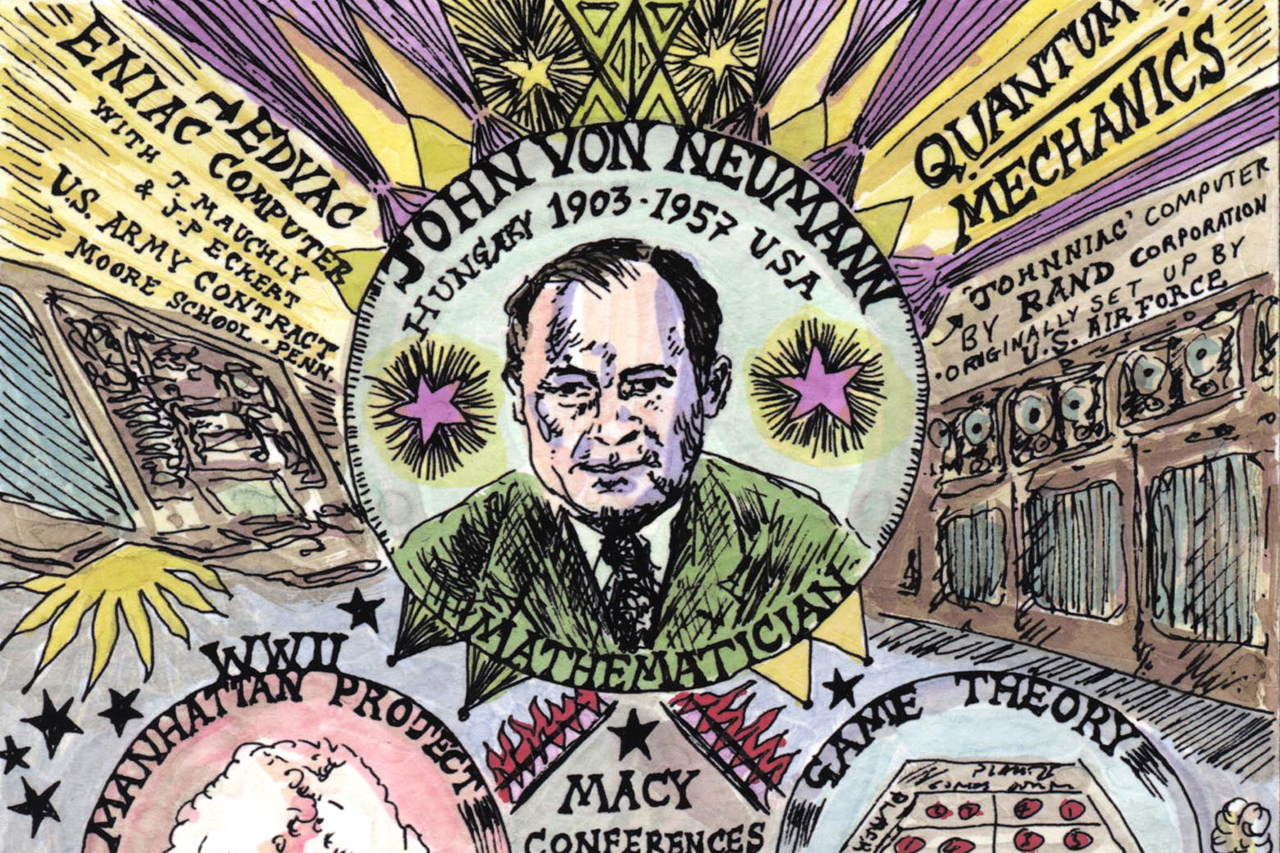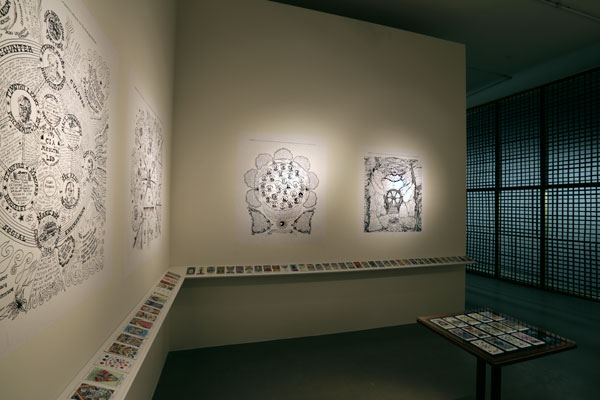Suzanne Treister
"HEXEN 2.0" (2009-2011) looks into histories of scientific research behind government programmes of mass control, investigating parallel histories of countercultural and grass roots movements. "HEXEN 2.0" charts, within a framework of post-WWII U.S. governmental and military imperatives, the coming together of scientific and social sciences through the development of cybernetics, the history of the internet, the rise of Web 2.0 and increased intelligence gathering, and implications for the future of new systems of societal manipulation towards a control society.
"HEXEN 2.0" specifically investigates the participants of the seminal Macy Conferences (1946-1953), whose primary goal was to set the foundations for a general science of the workings of the human mind. The project simultaneously looks at diverse philosophical, literary and political responses to advances in technology including the claims of Anarcho-Primitivism and Post Leftism, Theodore Kaczynski/The Unabomber, Technogaianism and Transhumanism, and traces precursory ideas such as those of Thoreau, Warren, Heidegger and Adorno in relation to visions of utopic and dystopic futures from science-fiction literature and film.
Based on actual events, people, histories and scientific projections of the future, and consisting of alchemical diagrams, a Tarot deck, photo-text works, pencil drawings, a video and a website, "HEXEN 2.0" offers a space where one may use the works as a tool to envision possible alternative futures.
"HEXEN 2.0" is the sequel to "HEXEN 2039" which imagined new technologies for psychological warfare through investigating links between the occult and the military in relation to histories of witchcraft, the US film industry, British Intelligence agencies, Soviet brainwashing and behaviour control experiments of the U.S. Army.
About the artist:
Suzanne Treister (b.1958 London UK) studied at St Martin's School of Art, London (1978-1981) and Chelsea College of Art and Design, London (1981-1982) based in London having lived in Australia, New York and Berlin. Initially recognized in the 1980s as a painter, she became a pioneer in the digital/new media/web based field from the beginning of the 1990s, making work about emerging technologies, developing fictional worlds and international collaborative organisations. Utilising various media, including video, cd-rom (see her resurrected Time Travelling with Rosalind Brodsky cd-rom), the internet, interactive technologies, photography, drawing and watercolour, Treister has evolved a large body of work which engages with eccentric narratives and unconventional bodies of research to reveal structures that bind power, identity and knowledge. Often spanning several years, her projects comprise fantastic reinterpretations of given taxonomies and histories that examine the existence of covert, unseen forces at work in the world, whether corporate, military or paranormal.
An archive : 1999-2010-2019
This page is an archive of the iMAL website that operated between 2010 and 2019. It compiles activities and projects made since 1999.
For our most recent news and activities, please check our new website at https://imal.org



